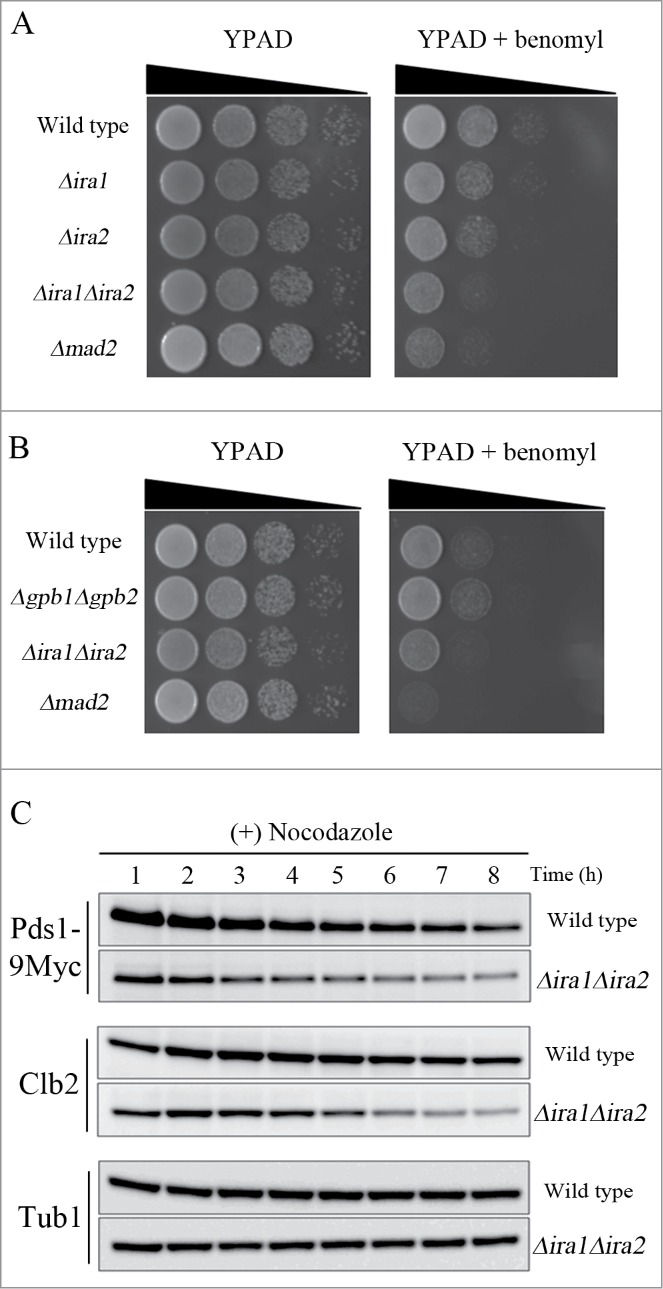Figure 4.

Ira1 and Ira2 are involved in the spindle assembly checkpoint (SAC) pathway. (A) Δira1Δira2 cells are sensitive to spindle damage. Wild-type, Δira1 (strain YSK2620), Δira2 (strain YSK2622), Δira1Δira2 (strain YSK2866), and Δmad2 (strain YSK2668) cells were grown to mid-log phase at 25°C, serially diluted 10-fold, spotted onto either YPAD plates or YPAD plates containing 10 μg/mL benomyl, and incubated at 25°C. (B) Δgpb1Δgpb2 cells are proficient for SAC. Wild-type, Δgpb1Δgpb2 (strain YSK2929), Δira1Δira2 (strain YSK2866), and Δmad2 (strain YSK2668) cells were grown to mid-log phase at 25°C, serially diluted 10-fold, spotted onto either YPAD plates or YPAD plates containing 10 μg/mL benomyl and incubated at 25°C. (C) Δira1Δira2 cells bypassed mitotic arrest in response to spindle damage. Wild-type and Δira1Δira2 cells expressing Myc-tagged Pds1 (strains YSK2992 and YSK3001, respectively) were grown to early log phase at 25°C and then treated with 15 μg/mL nocodazole. Cells were collected every 1 h for 8 h, and Pds1 and Clb2 expression (Pds1-9Myc and Clb2, respectively) was detected by western blotting using anti-Myc and anti-Clb2 antibodies, respectively. α-Tubulin (Tub1) served as a loading control.
